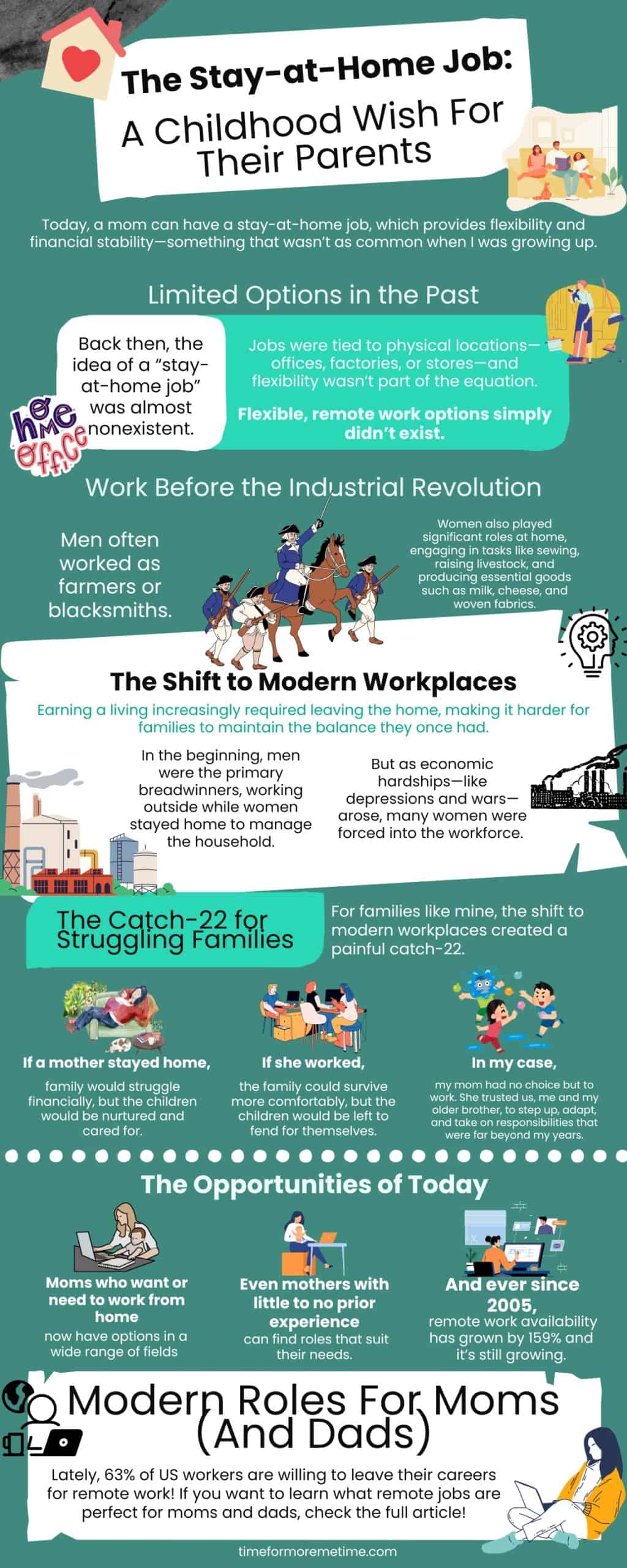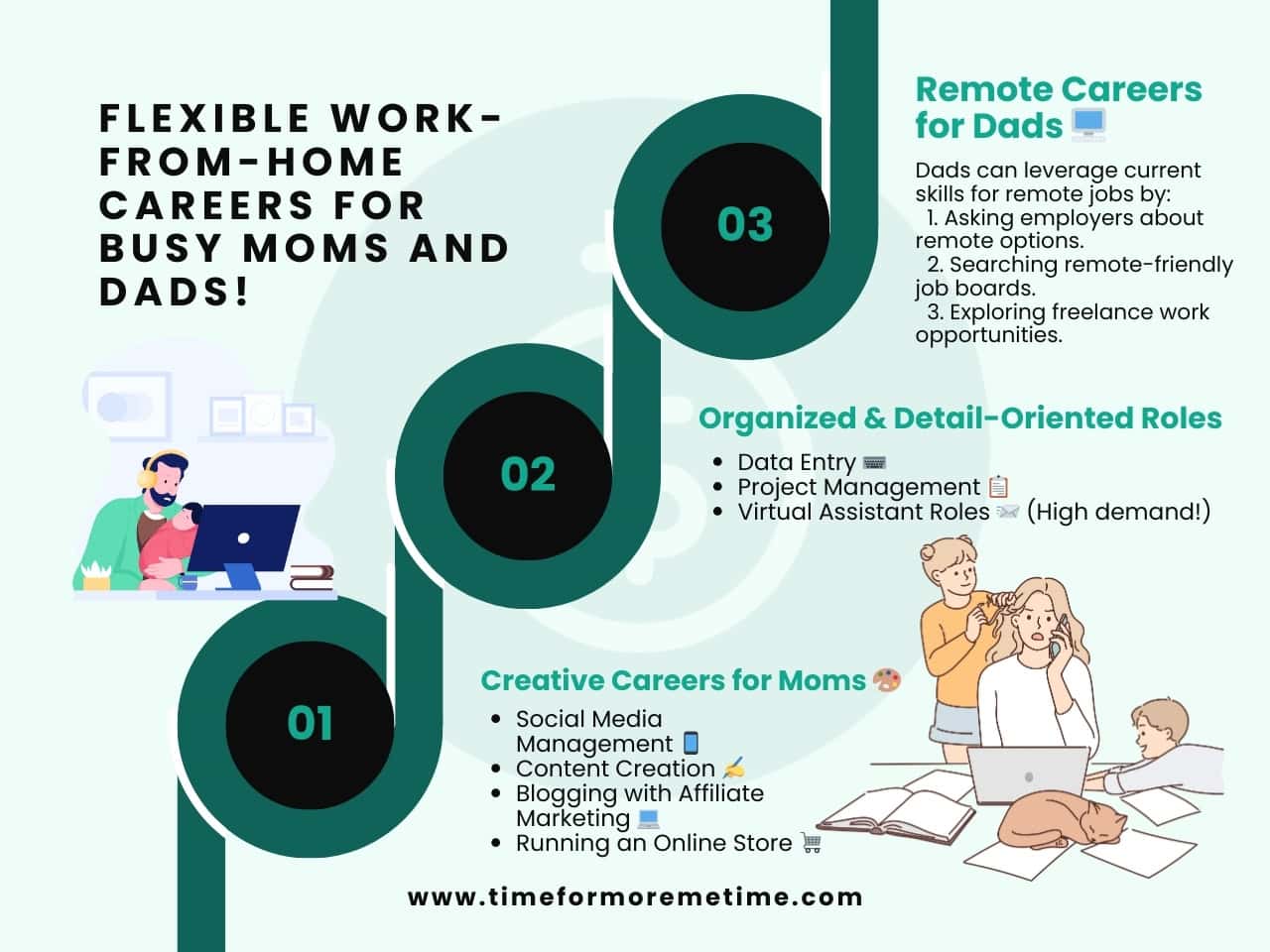
Today, a mom can have a stay-at-home job, which provides flexibility and financial stability—something that wasn’t as common when I was growing up. I often watched my mom balance an overwhelming number of responsibilities.
She managed our home with love and dedication, but the financial strain on my family was a constant presence.
I still remember the tough times, like our utilities being shut off, having to boil water for baths, and using candles as lights. We also relied on food banks, shared clothes, and walked everywhere because we couldn’t afford buses, experiencing firsthand the challenges of making ends meet.
And that’s not all, I vividly recall feeling helpless when we couldn’t even afford diapers for my baby brother. As young as I was, I worried about what to do if my brother soiled himself and there were no diapers to change him into.
As young as I was, I often worried about how we’d get by and wished my mom could have worked from home. I know this might sound selfish, but I was just a child, still figuring out how life worked, and I wanted her close by to guide us through those struggles.
If I only knew, this may become possible after a few decades. All I know at that time, my mother was having a hard time balancing her life and work. Even now, 60% of mothers working full time find it difficult to balance work and their family. It’s truly saddening.
With this in mind, I proceeded to research and thinking the effect of stay-at-home jobs on mothers and struggling families.
Limited Options In The Past
Back then, the idea of a “stay-at-home job” was almost nonexistent. Jobs were tied to physical locations—offices, factories, or stores—and flexibility wasn’t part of the equation.
Like many mothers of her time, my mom had to make the painful choice between being present for her children and earning an income to support the household. And she chose the latter.
Flexible, remote work options simply didn’t exist.
Her sacrifices were countless, and as a family, we endured the consequences of a system that offered so little flexibility to working parents. Even a few hours of flexible work from home could have made a world of difference.
But, opportunities for mothers to have careers while staying home were practically nonexistent.
Work Before The Industrial Revolution

As I reflect on the past, I’ve realized that stay-at-home jobs have existed in some form for centuries—long before the 1900s. In fact, before the Industrial Revolution, most work was centered around the home.
Men often worked as farmers or blacksmiths. While their work wasn’t exactly inside the house, it was nearby—just a few steps away in the fields or at the smithing table.
Women also played significant roles at home, engaging in tasks like sewing, raising livestock, and producing essential goods such as milk, cheese, and woven fabrics.
These activities allowed them to contribute to the household while caring for their children.
Although many of these jobs were physically demanding and required significant skills and perseverance, they were inspiring examples of resourcefulness and grit.
As a kid, I didn’t know this kind of work was even possible. Looking back, I wish I had understood. If I had, I might have suggested to my mom that she could have become a seamstress or learned a craft to sell her creations.
But I was just a child, unaware of how the world worked, and my mom was navigating the challenges of survival with limited options.
The Shift To Modern Workplaces

Technological advancements brought dramatic changes to the nature of work. With the rise of industries, jobs became more specialized and moved to offices, factories, and shops.
Earning a living increasingly required leaving the home, making it harder for families to maintain the balance they once had.
This transition didn’t happen overnight. In the beginning, men were the primary breadwinners, working outside while women stayed home to manage the household.
But as economic hardships—like depressions and wars—arose, many women were forced into the workforce. Sadly, by this time, many had lost the skills and knowledge needed to perform the traditional home-based jobs that had once sustained families.
In the past, these skills were often passed down naturally through observation. Parents worked at home, and children learned by watching and helping. It was an organic process—no formal teaching was needed because the skills were part of daily life.
Think about how communities like the Amish still pass down their craftwork and trades from one generation to the next, keeping their traditions alive through practice and example.
But today, things are different. Now, learning these skills often requires formal education, either paid or free. They’re vastly different from no experience remote jobs out there on the internet.
And for a struggling family with children and no internet access, it’s incredibly difficult to upskill and learn the old work-at-home jobs that once provided for families.
The resources and opportunities that used to be passed down through generations are no longer as accessible, leaving many families at a disadvantage.
The Catch-22 For Struggling Families

For families like mine, the shift to modern workplaces created a painful catch-22.
If a mother stayed home, the family would struggle financially, but the children would be nurtured and cared for. If she worked, the family could survive more comfortably, but the children would be left to fend for themselves.
In my case, my mom had no choice but to work. She trusted us, me and my older She trusted me, the eldest, to step up, adapt, and take on responsibilities that were far beyond my years.
That experience taught me independence and reliability, but I won’t sugarcoat it—it was a hard and lonely time for all of us.
As a kid, this situation forced me to grow up faster than my peers. Instead of thinking about the next game I’d play with my friends, I was focused on how to make sure my baby brother’s life was comfortable.
How could we eat? What food could I cook to stretch our little in the pantry to last the whole week?
Rather than staying out late and having fun with friends or experiencing moments with a crush, I had to rush home.
Who knows what mischief my brothers, left with the neighbors, could be getting into? How could I make it up to them to help us? It was exhausting, but over time, I grew accustomed to this responsibility.
Though it should have been my parents’ responsibility, I took it on as my own. But in the end, I wasn’t enough. After a few years of this setup, we were taken away as my parents were deemed incapable of raising us.
I’m sure my mom could have chosen remote work if it was available and we wouldn’t have parted with her. After the pandemic, it’s been found that 68% of women now prefer working remotely. My mom would definitely be part of that statistic.
Imagining A Different Reality

What if I could turn back time and change things? What if the stay-at-home jobs we have now had existed back then, allowing both my parents—not just my mom—to work from home?
I imagine that reality would have been so much better for the family. With my father having one of the highest-paying remote jobs and my mom doing some freelance gigs like freelance writing jobs.
Meanwhile, I could have focused more on school and friends without the constant worries that came with financial struggles. Everyone’s health might have been better, too—less stress, more time for rest, and fewer sacrifices. I probably would have had a more comfortable childhood.
Most importantly, I could have spent more quality time with my parents. They would have been around more, not just for the big moments but for the small, everyday ones too. Without long commutes, they could have rested more.
We would have saved money on gas and meals outside the home, giving us extra resources to use for other needs or even small joys.
The Opportunities Of Today

Fast forward to today, and the possibilities for stay-at-home jobs are truly endless.
Moms who want or need to work from home now have options in a wide range of fields, including customer service, virtual assistance, freelance writing, tutoring, and more.
Even mothers with little to no prior experience can find roles that suit their needs. User-friendly platforms and accessible online training programs have made it easier than ever to transition into remote work. And ever since 2005, remote work availability has grown by 159% and it’s still growing.
What was once a distant dream—finding stay-at-home jobs that pay well and fit around family life—is now a reality that countless families are embracing and benefiting from.
Modern Roles For Parents

Social media skills, for example, can open doors to a variety of remote opportunities. Moms can manage social media accounts, create engaging content, or even start and grow an online store.
Blogging has also become a popular avenue where affiliate marketing and sponsorships can turn personal passions into income streams. Mothers would definitely prefer this as it’s possible to earn supplemental income through this avenue. At least 24% of bloggers can earn around $100 to $1,000 monthly.
For those with a knack for organization, roles like data entry, project management, or becoming a virtual assistant provide stable and flexible career paths. Virtual assistants, in particular, are in high demand, helping small business owners and entrepreneurs streamline their operations while working entirely from home.
For office-worker dads can explore remote work opportunities with their current employer or search for jobs they can do from home. With the growing availability of remote jobs, dads now have more options to find work that fits their lifestyle and allows them to contribute while staying home.
Looking To The Future
The phrase “moms at home careers” isn’t just a trendy buzzword—it’s part of a larger movement toward flexibility and work-life balance. And it’s not just for moms; dads are increasingly tapping into these opportunities as well.
Looking ahead, I believe many more careers will shift to remote work.
Lately, 63% of US workers are willing to leave their careers for remote work!
Not to mention that a significant portion of office jobs today could already be converted into stay-at-home roles.
The technology is there, and the tools are in place. However, resistance rooted in traditional business practices and values remains as companies study how to make remote work as effective as possible.
Conclusion
The availability of remote jobs for stay-at-home moms is transforming the dynamics of family life. Parents no longer have to choose between being present for their children and earning an income.
Flexible schedules and remote work allow families to ease financial struggles without compromising time together.
If my mom had had the chance to explore careers for stay-at-home moms, I know our lives would have been different. Today, the possibilities are endless, and for that, I’m endlessly grateful.
Families now have opportunities to create balance, stability, and a brighter future for the next generation.
If you’re ready to take control of your finances and build a better future, check out our articles for tips, or watch our YouTube videos for more advice on saving, budgeting, and earning from home.






